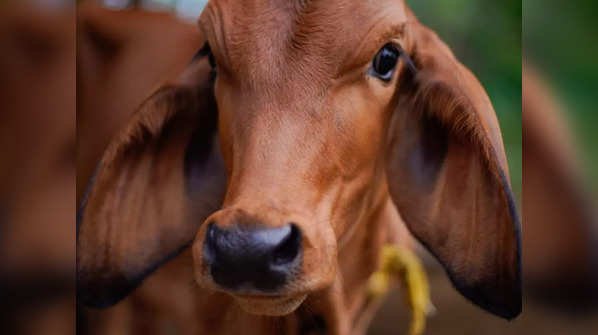The remarkable Lal Kandhari cow
The Lal Kandhari cow, also known as the Red Kandhari, is a remarkable breed native to India. Originating in the Marathwada region of Maharashtra, specifically in Latur, Kandhar taluk in Nanded district, and Parbhani district, this breed is well-known for its deep red skin. The breedŌĆÖs history dates back to the 4th century AD, when it received royal patronage from King Somadevaraya, who ruled over Kandhar. Physical characteristics
Lal Kandhari cows are medium-sized and robust, with bulls typically standing around 138 cm at the withers and cows around 128 cm. They have a broad forehead, long ears, and medium-sized, evenly curved horns. The bulls usually have a moderate hump and dewlap, and their eyes are bright with a black ring around the hoops. The cows are known for their hardiness and adaptability to various climates, making them suitable for heavy agricultural work such as ploughing and carting.The incredible milk production
One of the most notable features of the Lal Kandhari cow is its milk production. These cows can produce milk for approximately 275 days a year, with an average yield of around 600 kg per lactation. The milk has an average fat content of 4.57%, making it a valuable resource for dairy farmers. Despite their moderate milk yield, the Lal Kandhari cows are highly valued for their resilience and ability to thrive in challenging environments.A relatively affordable breed

The cost of a Lal Kandhari cow is relatively affordable, with prices around Rs 30,000. This makes them an attractive option for farmers looking for a reliable and cost-effective dairy cow. The breed is predominantly found in the districts of Bidar in Karnataka, as well as Latur, Parbhani, Nanded, and Hingoli in Maharashtra. These regions have a long history of raising Lal Kandhari cattle, and the breed continues to play a significant role in the local agricultural economy.What do they eat?
The Lal Kandhari cows are typically maintained under extensive management systems, grazing in small herds. Farmers often provide a small amount of concentrate feed to bullocks, milking cows, and male calves to supplement their diet. This breedŌĆÖs ability to produce milk consistently throughout the year, combined with its strength and endurance for draft purposes, makes it a versatile and valuable asset for farmers.
Cultural significance
In addition to their agricultural uses, Lal Kandhari cows are also known for their cultural significance. The deep red color of their skin is considered auspicious in many Indian traditions, and the breed is often featured in local festivals and ceremonies. The Lal Kandhari cowŌĆÖs resilience and adaptability have made it a symbol of strength and endurance in the regions where it is raised.
Final words
Overall, the Lal Kandhari cow is a remarkable breed that offers a unique combination of milk production, strength, and cultural significance. Its affordability and adaptability make it an excellent choice for farmers in India, particularly in the Marathwada region of Maharashtra and the adjoining areas of Karnataka. The breedŌĆÖs long history and continued importance in local agriculture highlight its enduring value and potential for future generations.ŌĆŗOther unique breeds that are indigenous to India
India is home to a rich diversity of indigenous cow breeds, each with unique characteristics and cultural significance. The Gir breed, originating from Gujarat, is renowned for its high milk yield and resistance to diseases. The Sahiwal, hailing from Punjab, is another exceptional dairy breed known for its adaptability to harsh climates. The Kankrej breed, found in Gujarat and Rajasthan, is valued for its dual-purpose utility in both milk production and draught work. The Red Sindhi, primarily from Sindh, Pakistan, but also found in India, is celebrated for its resilience and high milk production1. Lastly, the Tharparkar breed, native to the Thar Desert region, is known for its ability to thrive in arid conditions while providing both milk and draught power. These breeds not only contribute to the agricultural economy but also hold a special place in the cultural and ecological fabric of India.
Source : Times Of India






